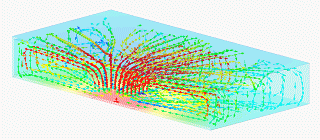“NASA could not have made it to the surface of Mars without aluminum.”
Those are the exact words of Dr. John Grotzinger, Chief Scientist and Head of Strategic planning for the 2012 Mars Rover Mission.
Looks like aluminium companies in Malaysia and around the world will be playing a big role in space travel in the foreseeable future. From robotic rovers to space craft, it is indispensable in the exploration of the final frontier.
When designing spacecraft and their components, engineers mainly focus on these tenets: Cost, strength, stiffness, weight, reliability, and adaptability.
Weight is primary concern when designing spacecraft and aluminium alloys are used extensively to build flight structures. Aluminium sheet is easily fabricated into machined skins, honeycomb rudder skins, fuselage, payload bay doors, crew cabin, wings and body flap of NASA’s space shuttle.
Lightweight construction means less costly fuel is needed to put spacecraft into space. It also gives engineers more wiggle room to put more functionality into the craft, like autonomous control devices or auxiliary systems.
The alloy is also cheaper compared with advanced materials, which are reserved for critical regions of the spacecraft. For example, reinforced carbon-carbon (which cost NASA $100,000/sq ft) is used in the nose cap as temperatures caused by friction with air during re-entry into the Earth’s atmosphere can reach 1260 degrees Celcius. Carbon has the highest melting point of all known elements. And Titanium, highly regarded as the magic metal in space engineering, is also very expensive.
A lower overall weight means a lot is helpful when designing a spacecraft. Less weight means less fuel is needed to launch the spacecraft into orbit – and fuel is expensive. This also allows some wiggle room for engineers to use the additional payload to include autonomous control devices and auxiliary equipment.
Alternatively, aluminium-lithium alloys are not only lighter than conventional aluminium (7-20 percent weight reduction). They are stiffer and stronger and its fabrication isn’t dissimilar to conventional alloys. It does, however, boasts 12 greater percent elastic stiffness and 20 percent greater tensile strength. The alloy also becomes significantly more durable at super-low temperatures. This is ideal for liquid oxygen and liquid hydrogen fuel tanks.
To help maintain stable temperatures, spacecraft usually use a grooved aluminium extrusions as heat pipes. These heat pipes work passively and do not need to be powered. And because the heat is In the form of gas it can be moved over long distances.

Animation showing how cool liquid absorbs heat, becomes vapour, is transferred away from the heat source (red), cools down, condenses into liquid again (green) and is then recycled. Courtesy of Heatlord, created for Wikipedia, http://www.novelconceptsinc.com.
Inside the heat pipes a liquid absorbs heat at the critical site which turns into vapour. The vapour then moves along to cooler parts of the pipe where it releases its heat energy. It then condenses once again into liquid and the process is repeated.
Along the inside of the pipes are broad flanges which increase surface area to facilitate heat transfer. This therefore helps dissipate heat more quickly.
Although aluminium is used primarily for its light-weight properties, the metal is incidentally a good radiation shield. A few mm of aluminium sheet metal will block most types of radiation from low earth orbit (i.e. beta rays).
.jpg)
Outside of the Earth’s protective atmosphere and magnetic shielding, radiation poses a serious problem for spacecraft electronics as well as human crew.
Polyethylene is augmented with the aluminium to help protect against UV, IR, cosmic rays which not only protects sensitive on-board equipment but also the crew.
If radiation penetrates flesh it causes damage to the tissue at a microscopic level. This damage could include DNA, which in turn could potentially lead to cancer, cataracts and other health problems over time.

 Philippines
Philippines